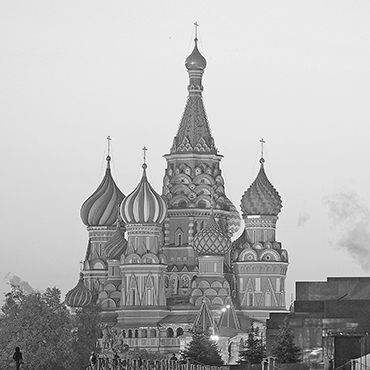THE END OF U.S.-RUSSIAN ARMS CONTROL?
The fate of the last nuclear arms control agreement between the United States and Russia is becoming increasingly uncertain. On January 30th, Russian Deputy Foreign Minister Sergei Ryabkov floated the prospect that Russia might allow the New START Treaty to expire after it ends on February 6th, 2024. Russia had previously withdrawn access for inspections and cancelled consultations scheduled for November 2022. Ryabkov justified Russia's position with the claim that the United States had ignored Russia's interests and wanted to inflict "strategic defeat" on Russia through the war in Ukraine. The New START Treaty, negotiated by the Obama administration, has been extended by the Biden administration during its time in office, despite persistent complaints regarding Russia's failure to comply with its terms. (Reuters, January 30, 2023)
AMID THE WAR, RUSSIAN OUTREACH TO AFRICA
Moscow is continuing its diplomatic offensive in Africa with renewed pledges to provide support for the continent's fight against terrorism. While on a visit to Mali, Russian Foreign Minister Sergei Lavrov promised Russian backing to a variety of West African states battling jihadist threats. Lavrov's pledge came as part of a larger trip throughout Africa, as Moscow attempts to increase its diplomatic influence across the continent. (The Moscow Times, February 8, 2023)
RUSSIA, IRAN TIGHTEN TIES
Moscow and Tehran are deepening their strategic partnership further with a new project that could enhance Russia's ability to menace Ukraine. The two countries are reportedly proceeding with a plan to build a new factory in Russia for the production of Iranian-designed drones, which Moscow has been using in its air campaign against Ukraine. In early January, Iranian officials visited the Russian town of Yelabuga to tour a prospective site, and since then concrete plans for the factory have been laid. According to foreign government sources, the factory could potentially manufacture up to 6,000 drones in coming years. (Wall Street Journal, February 5, 2023)
THE WAR'S SECOND ROUND GETS UNDERWAY
For weeks now, experts have been increasingly convinced that a redoubled Russian offensive in Ukraine isn't a matter of "if," but of "when." Rumors had swirled that the new military push might take place on or around February 24th, the first anniversary of Moscow's ill-fated "special military operation" against Ukraine. However, it appears that the Kremlin has stepped up its timetable. Novaya Gazeta Europe, citing battlefield assessments by the Institute for the Study of War, reported on February 9th that Russian forces had commenced a major offensive in the Luhansk region. The new military activity comes in addition to ongoing combat operations near Bakhmut. At the same time, "Russian sources are widely reporting that conventional Russian troops are attacking Ukrainian defensive lines and making marginal advances along the Kharkiv-Luhansk regional border, particularly northwest of Svatove near Kupyansk and west of Kreminna," the paper notes. However, "Ukrainian forces are so far preventing Russian forces from securing significant gains."
The ultimate size and duration of the new Russian offensive is a matter of speculation – one that is being closely watched in Washington and European capitals. According to Ukrainian intelligence sources, the Russian military has already prepared nearly 2,000 tanks and 300,000 soldiers for its new incursion into Ukraine. (Novaya Gazeta Europe, February 9, 2023; Telegraph, February 9, 2023)
ASSESSING SUPPORT FOR THE "SPECIAL MILITARY OPERATION"
For months, Western observers have pondered why, despite an expanding array of biting sanctions and restrictions imposed by the U.S. and Europe, internal backing for the Russian government's military offensive seems to remain high. Estimates of exactly how high, however, have been frustrated by the notoriously unreliable nature of Russian polling, which was already problematic prior to the war because of the political pressure exerted by Russia's authoritarian drift, but which has become entirely opaque since the start of the conflict last February. Even so, it is possible to discern some significant trendlines. Writing for Mozhem Obyasnit, a Russian opposition media outlet, Abbas Gallyamov, a former Putin speechwriter who has now been designated a "foreign agent" by the Kremlin, has attempted to parse public opinion data for the past year from the Levada Center and ZIRCON, two of the country's least problematic surveyors.
According to him, the 43 percent of Russians who oppose the war can be broken down into the "opposition core" (roughly 8 percent), which has been staunchly against the conflict throughout, the "opposition periphery" (some 25 percent), encompassing those who are dissatisfied with the regime but less likely to mobilize against it, and the "semi-opposition" (approximately 10 percent), who no longer accept Kremlin propaganda but can still, in theory, be convinced to support the Russian government under certain conditions. The 40 percent of Russians who support the war, meanwhile, include a staunch ideological core (10 percent), and an additional 20 percent belonging to the "power periphery," whose members tend to agree with Kremlin rhetoric but increasingly reject its heavy-handed methods – and among whom the "demand for change" is "maturing." Ten percent more are "half-loyalists," who evince general dissatisfaction with the state of affairs within the country and might be persuaded to join the opposition depending on domestic events. The final ideological group of note, Gallyamov writes, is made up of those who are "hardly interested in politics," and represents roughly a fifth of the country's electorate. (Mozhem Obyasnit, February 10, 2023)
Want these sent to your inbox?
Subscribe

